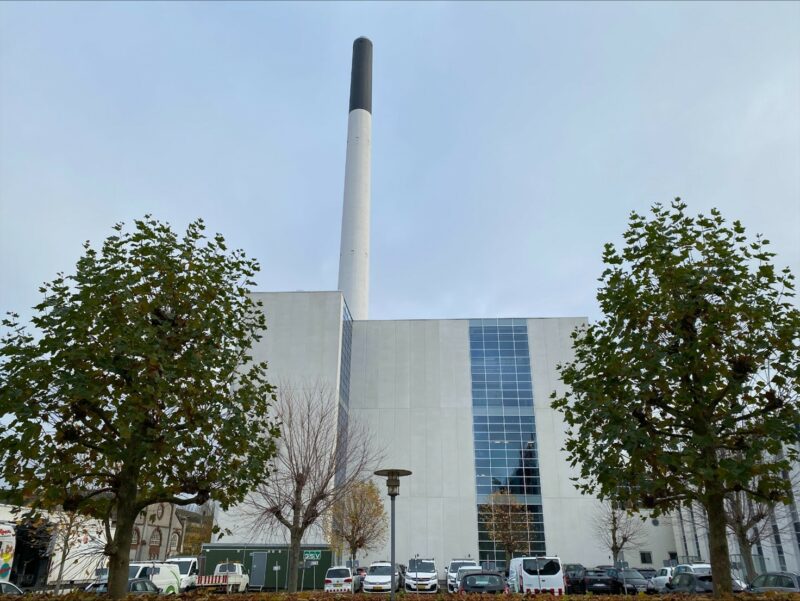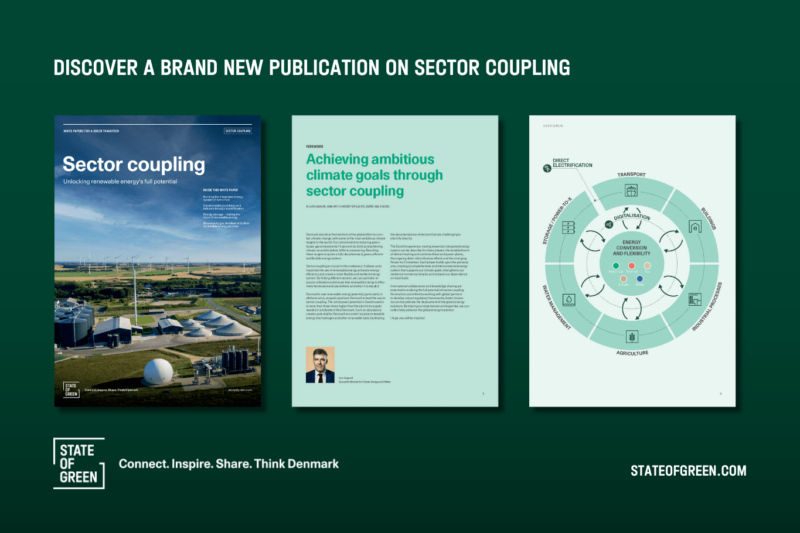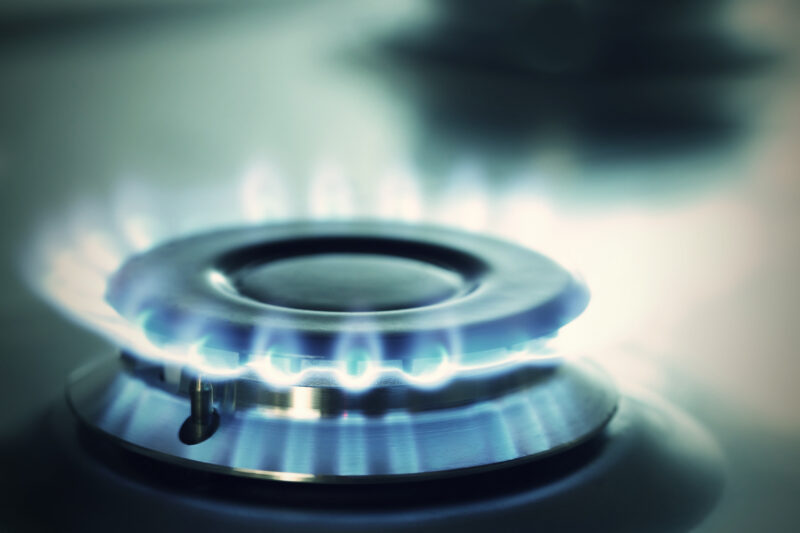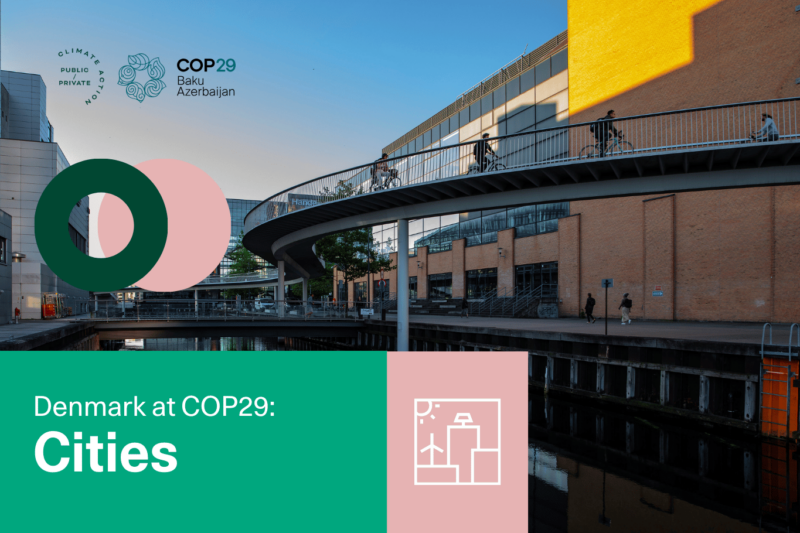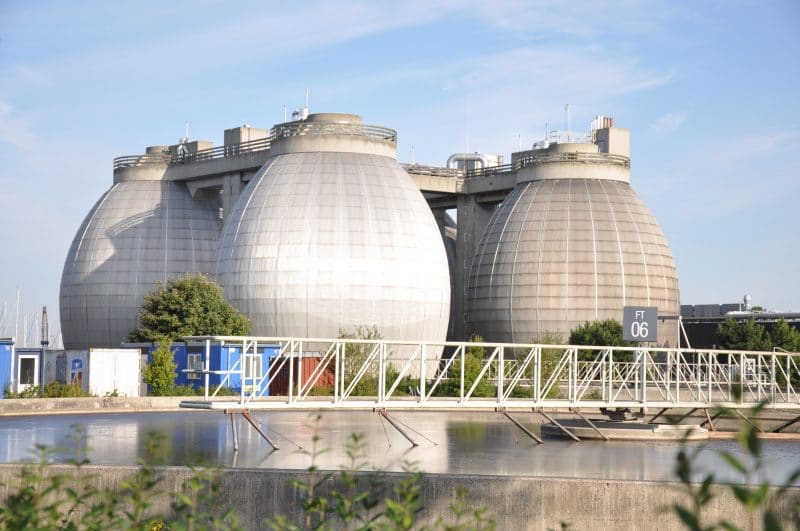News
Wastewater management
Water management
10 examples that unlock the potential of wastewater


We have gathered 10 examples of Danish wastewater solutions implemented in Denmark and abroad. The solutions span across energy-producing wastewater treatment plants, using wastewater as a resource, centralised & decentralised solutions, and treating industrial wastewater.
1: City hall treatment solution, Nonthaburi Thailand
In 2008, the municipality of Nonthaburi outside Bangkok installed their first own sewage treatment plant. The decentralised system treats the wastewater from the local town hall and discharges the treated wastewater to the neighbouring park, where it contributes to keeping a constant water level in a scenic lake. Since the treatment system is noise and odour free, the city hall placed their outdoor restaurant on top of the treatment plant — so far without any complaints from the guests. This demonstrates very well, the low level of odour and noise of the wastewater treatment process, as an open air public restaurant is placed on top of it. (Courtesy: BioKube)
2: Decentralised solution for luxury hotel, Mombasa, Kenya
In East Africa, there is an increasing demand for high-quality decentralised wastewater treatment. Fresh water supply is scarce and reuse of the treated wastewater increases the available water resources. An example is the wastewater treatment systems installed at the luxury hotel English Point in Mombasa. The systems treat the wastewater to a quality of which the water safely can be reused for toilet flushing and watering of the hotel lawns. To maximise the use of the surface area available for hotel buildings the system was installed in the hotel basement. As a result, it was crucial that the system chosen delivered treatment that limited the noise and odour to a minimum. A similar system was installed in the high-end hotel Ramada Beach Resort in Tanzania. (Courtesy: Biokube)
3: Treating hospital wastewater, Herlev, Denmark
Hospital wastewater is a complex mixture of disease bearing pathogens, medicine residues and other hazardous substances which presents a risk to utility staff, public health and the environment. Technology suppliers have collaborated with one of Denmark’s biggest hospitals, Herlev Hospital, to implement a full scale innovative wastewater treatment solution. The full-scale plant has been in operation since May 2014. The plant is based on an innovative combination of the technologies: Membrane bio reactor (MBR), ozonation, granulated activated carbon (GAC) and UV treatment. Hazardous pharmaceuticals, estrogenic activity and pathogens are efficiently removed, resulting in an effluent which can be discharged directly to the local stream or reused as cooling water at the hospital. The cost evaluation shows total operation and maintenance cost of EUR 1.45 per m3 and a simple payback time of 8 years based on sewer tax savings. (Courtesy: DHI and Grundfos)
4: Reducing energy costs for centralised wastewater treatment, St. Petersburg, Russia
Centralised treatment requires the wastewater to be transported over a certain distance. In many locations, this is associated with high costs for pumping systems. With five million people, St. Petersburg is the second largest city in Russia. One of its major wastewater treatment plants has an inflow of 1.5 million m3/day of wastewater. The plant, established in the 1970s, had very high energy costs partly caused by overload of existing pumps when the flow exceeded their capacity of 3,500 m3/hour. Even though the plant remained operational, the maintenance and energy costs were high. To solve this, renovation of the sludge return pumping station was carried out and four new Grundfos pumps were installed in 1998, followed by another eight pumps in 2000. All of these pumps are 65 kW heavy-duty sewage pumps with a free passage of 125x163 mm. The renovation of a sludge pumping station led to such a remarkable reduction in energy and maintenance costs that the technicians at the plant literally thought the electricity meters had broken down. (Courtesy: Grundfos)
5: Wastewater for irrigation, Malta
Assisted by Danish wastewater experts, the Republic of Malta in the Mediterranean Sea has implemented a new wastewater infrastructure. It aims at reusing the effluent for irrigation and for industrial purposes. Today, treated wastewater is considered a useful resource in Malta and the irrigation systems ensure a significant increase in agricultural production during dry periods. The project included an upgrade of one wastewater treatment plant with a capacity of some 17,000 m³/day and the construction of two new treatment plants to treat sewage from most towns and settlements on the country’s two islands, Malta and Gozo. Each of these plants has a capacity of 45,000 person equivalences (PE) and about 50% of the effluent will be reused for irrigation and second class industrial water. (Courtesy: COWI ).
6: Phosphorus recovery from wastewater, Herning and Aarhus, Denmark
In 2015, the water utility Herning Water Ltd. opened the largest P-recovery plant in Denmark, which recovers phosphorus from a concentrated side stream in the wastewater treatment plant. For several years, the WWTP suffered from struvite scale buildup in its sludge and wastewater pipes, causing problems for the dewatering process of sludge and biogas production. In addition to solving the problem, Herning Water wanted to exploit the potential of recycling the struvite into agricultural fertiliser. A solution based on controlled precipitation of struvite was therefore designed, and a full-scale recovery plant of the phosphorus compound struvite was built based on previous test results from Aarhus Vand at its plant Aaby WWTP. At both plants, the struvite is precipitated as a ‘ready-to-use fertiliser’ and sold to a fertiliser company. An official approval of the product as commercial fertiliser has been obtained for the struvite produced at both the Herning and Aarhus plants under the name PhosphorCare™. The operational savings at the treatment plants and the expected revenue from sale of struvite is expected to result in a payback time of 7 years. (Courtesy: Herning Water, Aarhus Vand, Stjernholm, Grundfos, Norconsult, Suez and SEGES)
7: Construction of new centralised WWTP, Rezekne, Latvia
Deliberate internationalisation strategies of Danish wastewater companies have carried Danish expertise into the world, and today most activities of Danish contractors and engineering companies lie outside Denmark. An example of this is Rezekne, Latvia, where a new fully automated wastewater treatment plant was designed and constructed by the Danish contractor, Per Aarsleff. The aim of the project was to improve the water quality of the Baltic Sea as wastewater in this region is discharged to the river Daugava which ends up in the Baltic Sea. The contract included all civil, mechanical and electrical/SCADA works as well as commissioning, training and testing of all equipment. The treatment plant has a capacity of 52,300 PE and the operation is automatic and controlled by SCADA. As part of the project, a pre-treatment section with mechanical equipment and aerated sand trap was installed as well as tanks for biological treatment for N and P removal and SS tanks for settling of sludge and solids. Dewatering of sludge is carried out means of a centrifuge. The effluent is treated to a quality which complies with EU Directive 91/271/EEC. (Courtesy: Per Aarsleff)
8: Reuse of laundry wastewater through Forward Osmosis, Singapore
The company Orchid Laundry wanted to test bed the use of the Aquaporin Inside™ Technology for dewatering wastewater from a pre-wash step of a petroleum industry’s uniform/coverall washing process and simultaneously reduce the company’s need for freshwater in other washing processes. Aquaporin Asia designed and tested a lab scale Forward Osmosis process using concentrated laundry detergents as a draw solution to reduce wastewater, while diluting detergents for use in the laundry process. No high-pressure pumps or equipment were needed in such a system, reducing both operating expenses and capital expenditures. A range of detergents were tested as draw solutions for optimised water flux, and tests were run to determine the osmotic driving force and water flux capability, as well as identifying potential fouling issues in the system. The project showed the potential for Aquaporin forward osmosis membranes to be used in a process to cost-efficiently reduce wastewater volumes significantly, while enabling direct reuse of the clean water produced. The project was supported by a research grant from the Singapore National Research Foundation. (Courtesy: Aquaporin, DHI, NEWRI and Singapore Membrane Technology Centre at Nanyang Technological University)
9: Reuse of 95% of industrial wastewater from metal machining company, Horsens, Denmark
The metal machining company, AAOsteel, specialises in deep draw, stamping and cold forming of steel. The company used to dispose more than 1,200 m³/year of process water from their alkaline automatic rinsing line. The annual costs for disposal of process water to an outside company was constantly increasing, surpassing EUR 100,000. In addition, the company faced high expenses for soft water. To solve this challenge, an Envotherm ET350 plant with E•MVR Technology was installed to process the wastewater in a way that reduces the need for disposal to less than 5%. The remaining 95% of distilled water is of such high quality that it can be recycled directly into the company’s production process. Oil content has been reduced to less than 10 ppm and conductivity to less than 40 µS/cm. The investment was paid back in less than 2 years. (Courtesy: Envotherm and AAO Steel)
10: Achieving 153% energy self-sufficiency at WWTP, Aarhus, Denmark
Over the past five years, the water utility Aarhus Vand has put great focus on energy savings and energy production. At its Marselisborg WWTP, the utility has implemented energy-saving technologies such as an advanced SCADA control system, a new turbo compressor, sludge liquor treatment based on the anammox process, as well as optimised the fine bubble areation system. This has resulted in a reduction in power consumption of approximately 1 GWh/year which corresponds to about 25% in total savings. During the same time period, the energy production has been improved through implementation of new energy efficient biogas engines (CHP), resulting in an increase in electricity production of approximately 1 GWh/year. Furthermore, a new heat exchanger has been installed with the aim of selling surplus heat to the district heating grid, which represents approx. 2 GWh/year. In 2015, Marselisborg WWTP had a total energy production of 9,628 MWh/ year and an energy consumption of 6,311 MWh/year, equivalent to a net energy production of 153%. Most of the installed technologies have a payback time of less than 5 years. (Courtesy: Aarhus Vand)
You should consider reading
solutions
Climate change adaptation
+4
WATER CONSERVATION IN AFRICA
4 November 2024Perspective
Sector coupling
+9
New white paper: Unlocking the potential of renewable energy through sector coupling
23 October 2024solutions
Wastewater treatment
+1
